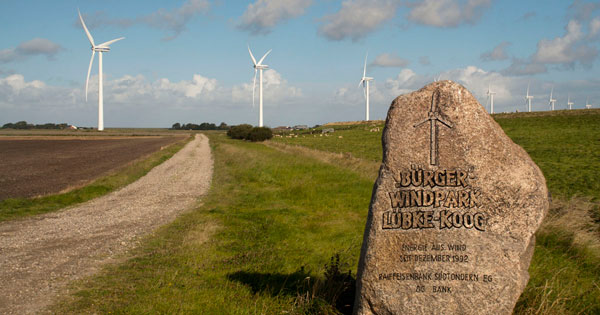Electricity Feed Laws & Feed-in Tariffs
While not exhaustive, this site contains an extensive collection of articles on Feed-in Tariffs, Advanced Renewable Tariffs, Renewable Energy Payments, and what some Americans are calling CLEAN contracts. Learn more about feed-in tariffs and how they have been successful in Europe, and how they can benefit North Americans.
What are Feed-in Tariffs?
Feed-in tariffs are simply payments per kilowatt-hour for electricity generated by a renewable resource. In North America this simple idea is known by many different names: Electricity Feed Laws, Feed-in Laws, Feed-in Tariffs (FITs), Advanced Renewable Tariffs (ARTs), Renewable Tariffs, Renewable Energy Payments, and more recently CLEAN (for Clean Local Energy Accessible Now) contracts. Regardless of the name, they are the world’s most successful policy mechanism for stimulating the rapid development of renewable energy.
Feed-in tariffs are also the most egalitarian method for determining where, when, and how much renewable generating capacity will be installed. Renewable Tariffs enable homeowners, farmers, cooperatives, and First Nations (Native North Americans) to participate on an equal footing with large commercial developers of renewable energy.
Electricity Feed Laws permit the interconnection of renewable sources of electricity with the electric-utility network and at the same time specify how much the renewable generator is paid for their electricity and over how long a period.
Electricity Feed Laws have been widely used in Europe, most notably in Germany, France, and Spain.
Advanced Renewable Tariffs (ARTs) are the modern version of Electricity Feed Laws. ARTs differ from simpler feed-in tariffs in several important ways. Most importantly, ARTs are differentiated by technology, application, project size, or resource intensity. There is one price for wind energy, another price for solar, and so on. Tariffs within each technology can also be differentiated by project size or, in the case of wind and solar energy, by the productivity of the resource. Tariffs for new projects are also subject to periodic review to determine if the tariffs are sufficiently robust to meet the targets desired in the time allotted.
What are Tariffs?
Tariffs are the price paid per kilowatt-hour of electricity consumed, or in this case, generated. The term is commonly used in North America’s electric utility industry. The term is also commonly used in Europe. Tariffs are not taxes nor in this context customs duties on goods crossing international borders.

How to Triple Annual Renewable Energy Deployment and Beyond
By
Toby Couture
To triple or more the annual levels of renewable energy deployment, all countries need to play a part. A mix of technologies will be required beyond solar, including both onshore and offshore wind, geothermal, wave and tidal power, as well as biogas, depending on the local context, and local resource availability. To absorb the growing volumes of low-cost renewables, the “electrification of everything” needs to broaden, and deepen, powering a growing share of heating and cooling demand (= ca. 50% of global energy demand) as well as a growing share of transportation-related energy demand (= ca. 30% of global energy demand).

The cost of wind, the price of wind, the value of wind
By
Jérôme Guillet
Oscar Wilde famously wrote that people “know the price of everything and the value of nothing” suggesting there is a difference between the two concepts of price and value. In the power market, due to some of its structural features, it is even more confusing as you also need to deal with the cost of power, which may again be different. The below, derived from an article I wrote almost 15 years ago, tries to make sense of the differences between the 3, and how these are ultimately decided by political choices.

Hungary Could Re-launch Feed-in Tariff Applications in 2023
By
External Source
Hungary could start accepting household applications to join the country’s feed-in tariff scheme again “as soon as this year,” Minister of Energy Affairs Csaba Lantos said in an interview published in the latest issue of weekly Mandiner.

Finally, The EU’s Market Policy Recognizes Reality
By
Paul Gipe
After decades of ideological mismanagement of the blocs’ electricity market policy, change may be on the horizon. The EU’s policy has nearly obliterated the continent’s renewable energy industry, leading to the easily predictable–and predicted–dependence on Russian gas and oil. It took the invasion of Ukraine and skyrocketing energy prices for the EU to ask “how did we get it so wrong.”

Feed-in Tariffs Needed Now to Meet Paris Climate Targets Says Report
By
Paul Gipe
If we are to meet the Paris climate targets, feed-in tariffs for renewable energy are needed now more than ever says a report by Toby Couture and colleagues at Proseu, Prosumers for the Energy Union. The topic is timely as world leaders gather in Glasgow for COP 26 to discuss ways of drastically cutting carbon emissions.

Major New Study Criticizes Auctions: Recommends More Equitable Policies to Spur Rapid Renewable Energy Development
By
Paul Gipe
In a sign that Feed-in Tariffs as a policy mechanism for the rapid—and equitable—development of renewable energy are not dead and that their proponents have not given up the hope of a brighter post Covid-19 future, the Energy Watch Group has released a major new report.
